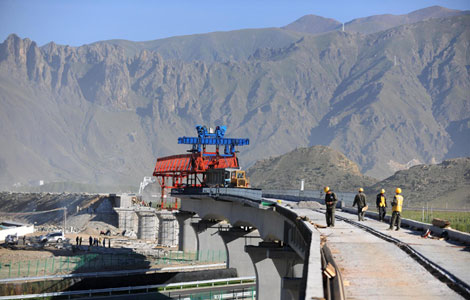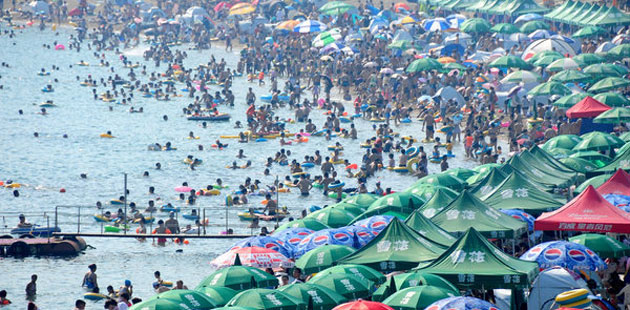Arctic sea ice shrinks, ice free summer looms
Updated: 2011-09-02 20:04
(Agencies)
|
|||||||||||
OFF SVALBARD, Norway - Arctic sea ice cover has already shrunk to its third lowest level on record this year, in an irreversible trend which may see an ice-free summer around 2030, said the head of the world's main monitoring centre.
The sea ice area will be reduced further in the next two weeks but was unlikely to beat a 2007 retreat in a 32-year satellite data record, said Mark Serreze, director of the US-based National Snow and Ice Data Center.
While sea ice does not raise sea levels when it melts, just as melting ice in a glass of water, an ice-free summer would have implications for the exploitation of resources in the area, scientists say. It could also disrupt weather patterns or cause the Greenland ice sheet to melt more rapidly.
Exxon Mobil Corp and Rosneft signed an agreement on Tuesday to extract oil and gas from the Russian Arctic, in exploration which may be assisted by the recent trend of summer sea ice retreat north of Russia.
"The numbers today are saying that if all further melt stopped right now it would be the third most in the satellite record," Serreze said on Thursday.
"We just dropped below 4.6 million square kilometres and that's what we had in 2010 (at the minimum). We're continuing the overall pattern of loss, and there's still a couple of weeks to go in the melt season."
"Will we break the record in 2007? I don't think so but we're going to be close."
Sea ice floats in water and covers the North Pole, as distinct from ice sheets resting on land. The Greenland ice sheet contains the equivalent of about 7 metres sea level rise if it all melted.
The five biggest summer sea ice retreats have all been in the past five years, in a satellite record dating back to 1979, a trend which most scientists attribute to manmade warming.
The ice usually hits a minimum around mid-September each year, before growing again as cold winter weather returns.
The warming is exaggerated by an albedo effect where more open water without ice reflects back into space less sunlight, warming the local area more, leading to more open water, and so on.
Satellite readings also suggest that the sea ice is thinning, say researchers at NSIDC and other institutes, but such readings are less certain than the measurement of area.
"Everything we look at is all pointing in the same direction. Is Arctic ice cover thinning, absolutely it is, hand in hand with extent," Serreze said.
"The long-term picture is very, very clear. There's no going back now."
Most scientists agree that the Arctic is on track to be completely ice-free in summer at some point this century, with sharp disagreement about exactly when. Having an ice-free summer in 2030 was "not unrealistic", Serreze said.
Some climate sceptics have pointed to the shortness of the satellite record to cast doubt on identifying a new Arctic sea ice trend, or to blame man-made climate change.
Related Stories
Russian meteorologists report ice reduction in Arctic 2011-08-07 21:06
Russia says high ice melt opens Arctic trade routes 2011-08-04 10:10
More polar bear cubs die as Arctic ice melts 2011-07-19 09:46
Arctic-crossing algae, whale show threat to Atlantic 2011-06-26 15:23
Hot Topics
Libya conflict, Gaddafi, Oil spill, Palace Museum scandal, Inflation, Japan's new PM, Trapped miners, Mooncake tax, Weekly photos, Hurricane Irene
Editor's Picks

|

|

|

|

|

|






